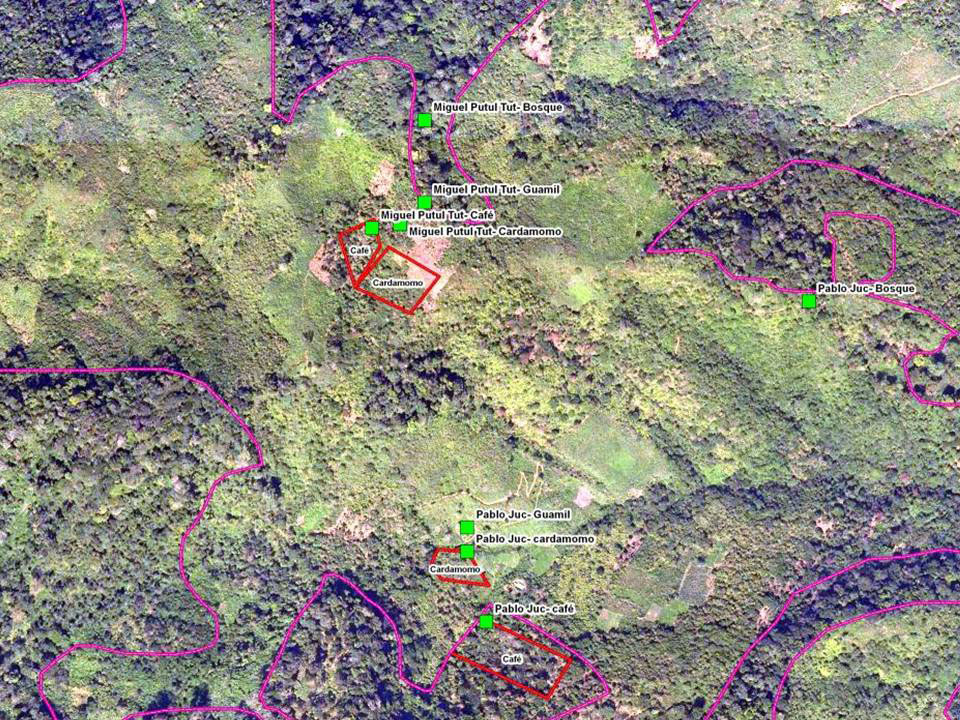
NRI experts working on the project 'Agroforests: A critical resource for Megadiversity in Guatemala', have initiated studies to evaluate the biodiversity on coffee farms in Guatemala. Diego Pons from the University of Valle leads the study with support from Francisco Pacay of the Foundation for the Defence of Nature which manages the Sierra Las Minas Biosphere reserve.
The project is examining the land-use patterns of indigenous Q'eqchi' and Poqomchi' communities to study the landscapes capacity to sustain biodiversity. Initial results show that despite having very small areas of less than a hectare of productive coffee and cardamom, the communities still maintain significant patches of forest. These, together with the maize-fallow rotations, create a rich mosaic of forest and agroforest habitats that preserve some of the mature forest species such as Swietenia macrophylla (mahogany), Hyeronima alchorneiodes and Callophyllum brasiliense.
The Guatemalan collaborators are evaluating insect biodiversity in the different elements of this landscape mosaic to understand to what degree the agroforest systems support natural forest biodiversity. As part of the process, training has been given to the biosphere forest guards and collaborating farmers on collecting and evaluating insect diversity from the litter layer using Winkler sacks to extract the insects (see photo), and from herbaceous vegetation using sweeping with nets.
Two Guatemalan specialists have been contracted to help with the identification of the insects collected, such as ants and hemipteran bugs. Although so far we have reviewed less than 10% of the samples (containing ~1200 ants) already an ant species has been found that is known from only one other specimen in Guatemala, in addition to other forest specific species, so we are hopeful of other interesting finds as the work progresses.
Our challenge for the future is to find ways that can help the indigenous communities to conserve this biodiversity. Unfortunately one of their main sources of income, cardamom production, is being threatened by the arrival of a new thrip insect pest that has devastated production, reducing income from this crop to less than 20% of normal levels.
Traditionally cardamom is produced without the use of pesticides, but this new pest may compel farmers to turn to these products if they are to maintain their already meagre incomes. This will have unfortunate effects on the broader insect biodiversity.
New challenges are continuously emerging for farmers in these areas, and we will try to support them in finding new sources of income in the future compatible with conserving biodiversity.


